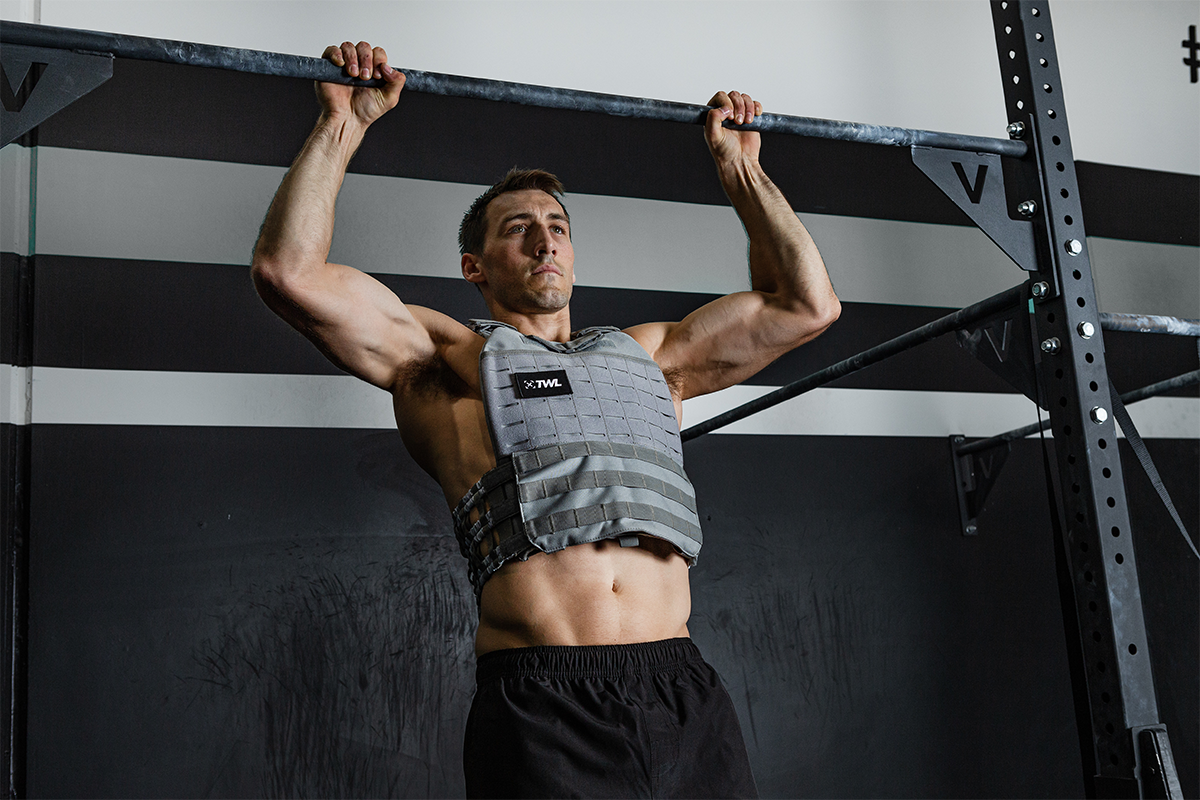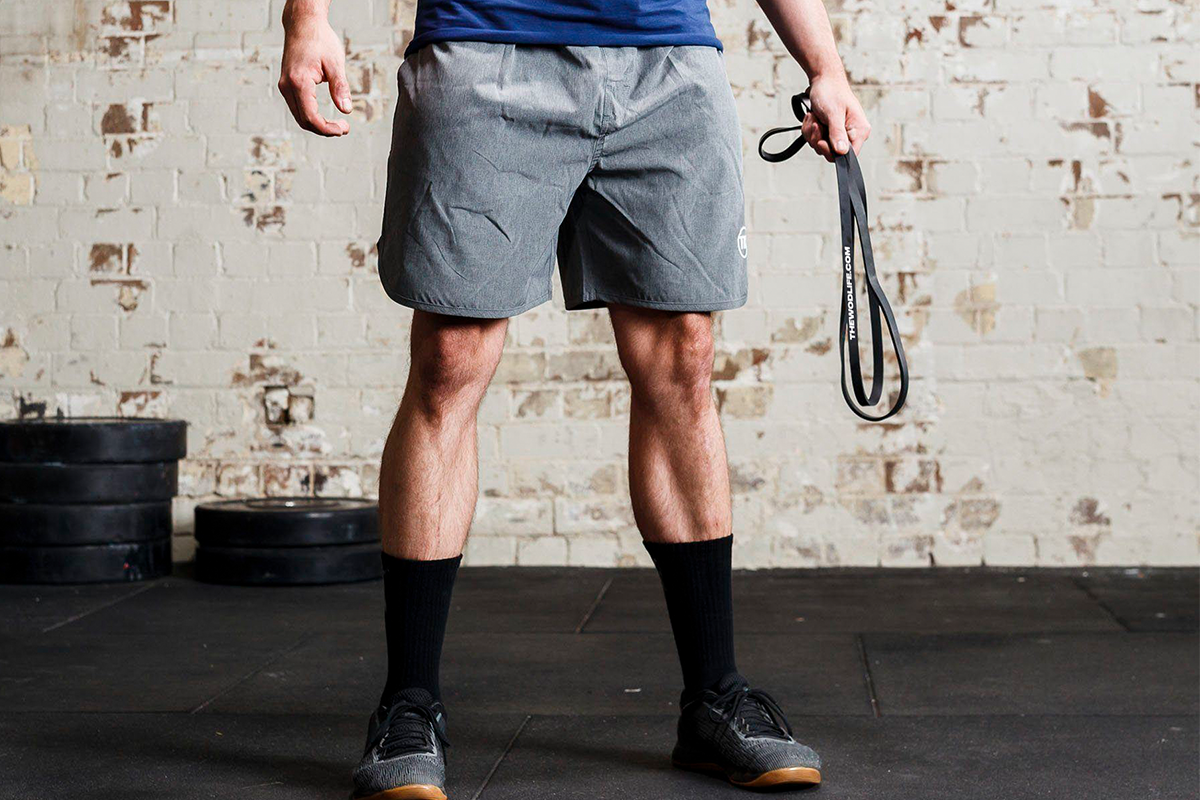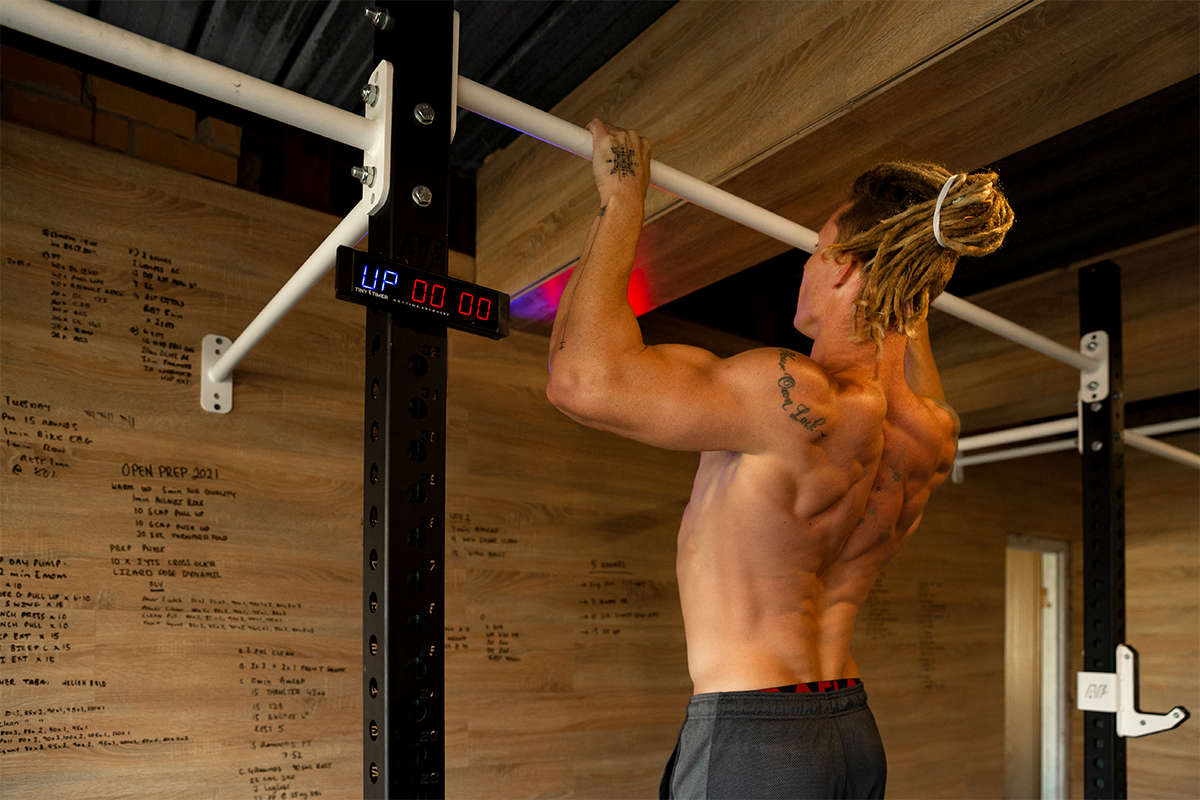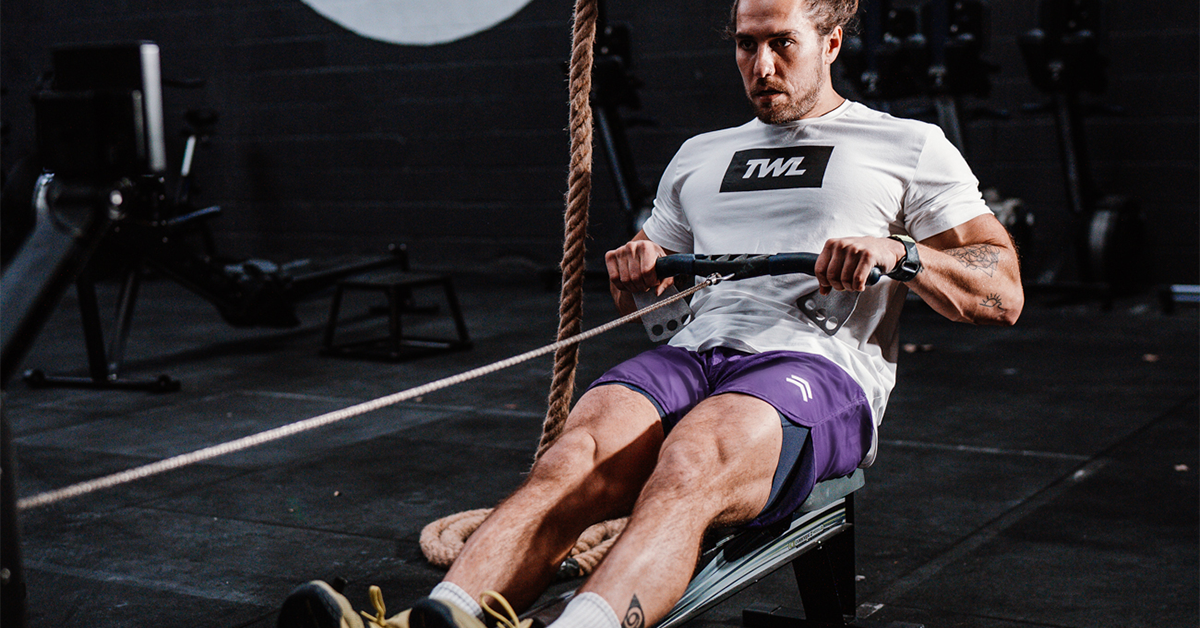If you know you have the strength to reach the bar, you might be considering speeding up those reps by switching to butterfly pull-ups. This is an efficient way to string more reps together faster, and it’ll probably save some much-needed energy you would otherwise expend on kipping.
The butterfly pull-up gets a lot of hate from people who don’t do functional fitness because they don’t consider it a “real” (read: strict) pull-up. The truth is you need a lot of shoulder girdle and upper body strength to learn how to do butterfly pull-ups. In fact, you should have strict and kipping pull-ups mastered first before moving on to the butterfly.
If you feel you’re ready to try butterfly chest-to-bar pull-ups, let’s talk about how you can get the “butterfly” part first.
What is a Butterfly Pull-Up, Exactly?
This is a pull-up where you use the force of your leg swing and hip snap to propel your body upward. This drastically reduces the force needed from your arms to pull your chin up over the bar. It’s not meant to strengthen your arms and shoulders the way strict pull-ups are. It’s a different exercise entirely and should be treated as such.
Butterfly pull-ups are best for metabolic conditioning. You can do them faster than strict and kipping pull-ups and in circuits or continuous reps. The repeated motions build your cardiovascular, respiratory, and muscular endurance. It also trains your agility, speed, coordination, and explosiveness (or power) — the ability to exert force at a high speed.
How Do You Execute It?
In the below video, Khan Porter and Coby Bates demonstrate how to execute butterfly pull-ups. Before you get started, be sure to protect your grip with tape, leather gymnastics grips, or something of the like.
Once you’re hanging from the bar, the first step is to create circles with your shoulders. It might help if you have someone who can assist you in making the forward and backward motion this movement involves.
You’ll notice your hips are opening and closing naturally with this movement, with your legs swinging along as you move. Once you feel comfortable with this motion, start making your shoulder circles bigger. Again, it should not be your arms doing the work. With these larger motions, the kick of your legs and the pop in your hips should be a little harder.
With the momentum this creates, your body will “swing” with less force. Remember, you should be lifting your chin, and eventually the top of your chest, above the bar. To make sure your face doesn’t hit the bar, look up at it and keep your chin up while completing the motions. Remember the movement standards for butterfly chest-to-bar pull-ups: your chest must clearly come into contact with the bar below the collarbone.
You know you’re doing it right when your feet kick forward and they come back straight away. This is so your hips can open and stay loaded, keeping you on the move. If you do it right, your feet should finish behind the bar.
Butterfly pull-ups, when done right, are a great exercise for training endurance and metabolic conditioning. While they are not meant to build strength like strict pull-ups, they serve an entirely different purpose that is just as useful. Where time is of the essence, they are undoubtedly a smart way to go.

















